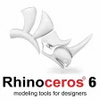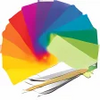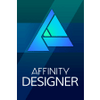Smart 3D Modeler
Smart 3D Modeler
Vote: (2 votes)
Program license: Free
Developer: Robert McNeel
Version: 6.13.19058.00371
Works under: Windows
Vote:
Program license
(2 votes)
Free
Developer
Version
Robert McNeel
6.13.19058.00371
Works under:
Windows
Pros
- Advanced NURBS modeling for precision
- Comprehensive tutorial resources and community examples
- Highly customizable with modular architecture
- Plugins for extended functionality
- Compatibility with openNURBS for project transferability
Cons
- Full version requires purchase for all features
- May have a steep learning curve for new users
- Intensive on system resources for complex projects
Powerful 3D Design Tool for Professionals
Introduction to Rhino
Rhino, developed by Robert McNeel and Associates, is a comprehensive application tailored for creating intricate and precise 3D designs. Renowned for its robust 3D graphic design capabilities, Rhino presents itself as a versatile platform that appeals to a vast spectrum of designers, from beginners to seasoned professionals. Its hallmark is the integration of NURBS (Non-uniform Rational B-splines) technology, which brings a level of precision that is crucial for high-end design applications.
Diverse Modeling Capabilities
Rhino distinguishes itself as a powerful ally for producing professional-grade industrial designs. The application excels in rendering complex projects such as architectural visions and automotive prototypes. The core of Rhino’s modeling prowess lies in its use of NURBS, an advanced mathematical model which emphasizes the precision of curves and freeform surfaces. This stands in contrast to other Computer-Aided Design (CAD) software that may rely predominantly on polygon mesh models. Such a focus makes Rhino an optimal tool for designs that demand smooth and aerodynamic forms, typical of aeronautical and marine design.
In Rhino, users are provided with an environment designed around free-form surface modeling, enabling the translation of vision into digital reality. Accommodating for ease of use is a key feature, with a comprehensive set of tutorials and resources available, alongside impressive showcases from its active community.
Flexibility and Customization
The strength of Rhino also lies in its modular architecture and an open Software Development Kit (SDK). This allows for extensive customization, giving users the flexibility to craft bespoke commands and menus that streamline the modeling process. An assortment of plugins authored by Robert McNeel and Associates further extends Rhino's functionality, enabling niche commands for 3D animation, 3D printing, and scripting.
Furthermore, Rhino's compatibility with the openNURBS Initiative ensures that projects crafted within the software can be Ported seamlessly to other CAD systems, bolstering its collaborative and multi-platform capacities.
Powerful yet Accessible
Rhino manages to strike a balance between powerful rendering tools and an accessible interface. Users can confidently model complex, freeform 3D objects with curved edges, while also having the option to delve into advanced features and specialized commands. The software's user experience is crafted to cater to designers of all skill levels, making it as accommodating for students and hobbyists as it is for professional designers.
Conclusion
As an intricate tool for 3D design, Rhino sets itself apart with its emphasis on precision and customization. It offers a comprehensive suite for designers to unleash creativity without being hampered by technological constraints. While its full capabilities are unlocked in the paid version, the investment allows users to fully capitalize on its advanced saving features and broad range of functionalities. Rhino is a stellar choice for those who are serious about pushing the boundaries of 3D design and require a tool that can keep up with their aspirations.
Pros
- Advanced NURBS modeling for precision
- Comprehensive tutorial resources and community examples
- Highly customizable with modular architecture
- Plugins for extended functionality
- Compatibility with openNURBS for project transferability
Cons
- Full version requires purchase for all features
- May have a steep learning curve for new users
- Intensive on system resources for complex projects




